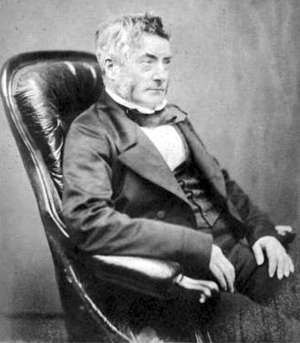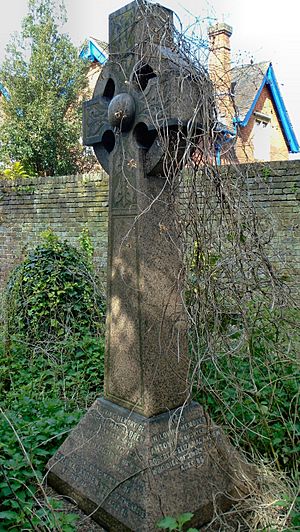Robert MacAndrew facts for kids
Quick facts for kids
Robert MacAndrew
|
|
|---|---|
 |
|
| Born | 22 March 1802 Wandsworth, London
|
| Died | 22 May 1873 (aged 71) |
| Nationality | British |
| Occupation | Merchant, ship-owner |
| Known for | Natural history of molluscs |
Robert MacAndrew was a British explorer of the sea, a successful businessman, and a passionate collector of shells! He was also a respected scientist who studied nature. He was born on March 22, 1802, in London and passed away on May 22, 1873, in Isleworth, Middlesex.
Contents
Robert MacAndrew's Early Life
Robert MacAndrew was one of eight brothers. His father, William McAndrew, was a merchant from Scotland who sold fruit and owned ships. Robert joined his brother William Peter in the family business after his father died in 1819. They imported fruit in London and Liverpool.
Later, Robert focused on owning ships through his business, McAndrew & Co. He moved to Liverpool after his brother passed away. In 1829, he married his cousin, Eliza, and they had eleven children.
Exploring the Sea and Collecting Shells
In 1834, Robert MacAndrew joined a science group in Liverpool. There, he met other people who loved studying nature. In the early 1830s, he became very interested in natural history, especially shells. He started to build a huge collection.
His many business trips to Spain, Portugal, and the Mediterranean Sea made him interested in collecting shells from the seashore. MacAndrew then went on many research trips. He used a special tool called a "dredge" to collect shells from the bottom of the sea. He explored the coasts of Britain, Ireland, Spain, Portugal, Madeira, the Canary Islands, and Norway. He even went to the Red Sea!
MacAndrew met Edward Forbes, who was one of the first people to study marine life deep in the ocean. Through Forbes, MacAndrew met other scientists who were also interested in dredging. These included John Goodsir, James Smith, and John Gwyn Jeffreys, who was a leading expert on shells.
Joining Science Groups
Robert MacAndrew became a member of important science groups. On April 6, 1847, he was elected a Fellow of the Linnean Society of London. This is a famous group for naturalists. On June 2, 1853, he became a Fellow of the Royal Society, which is one of the oldest and most respected science groups in the world.
From 1856 to 1857, he was the President of the Literary and Philosophical Society of Liverpool. In 1858, MacAndrew was chosen to be the Chairman of a new group called the General Dredging Committee. He led this group for two years. In 1867, MacAndrew stopped working in his business. In 1872, he and Arturo Issel won an award called the 'Prix Savigny' from the French Academy of Sciences. They won it for their work on the shells of the Gulf of Suez.
Donating Collections to Cambridge University
Robert MacAndrew collected tens of thousands of mollusc specimens during his many dredging trips. In 1873, he gave almost all of his amazing shell collection to Cambridge University Museum of Zoology. He also donated his library of books.
Today, you can find the MacAndrew Collection at the museum. It is a very important part of their mollusc collection. The museum has even made a searchable online database of the mollusc collection on their website.


